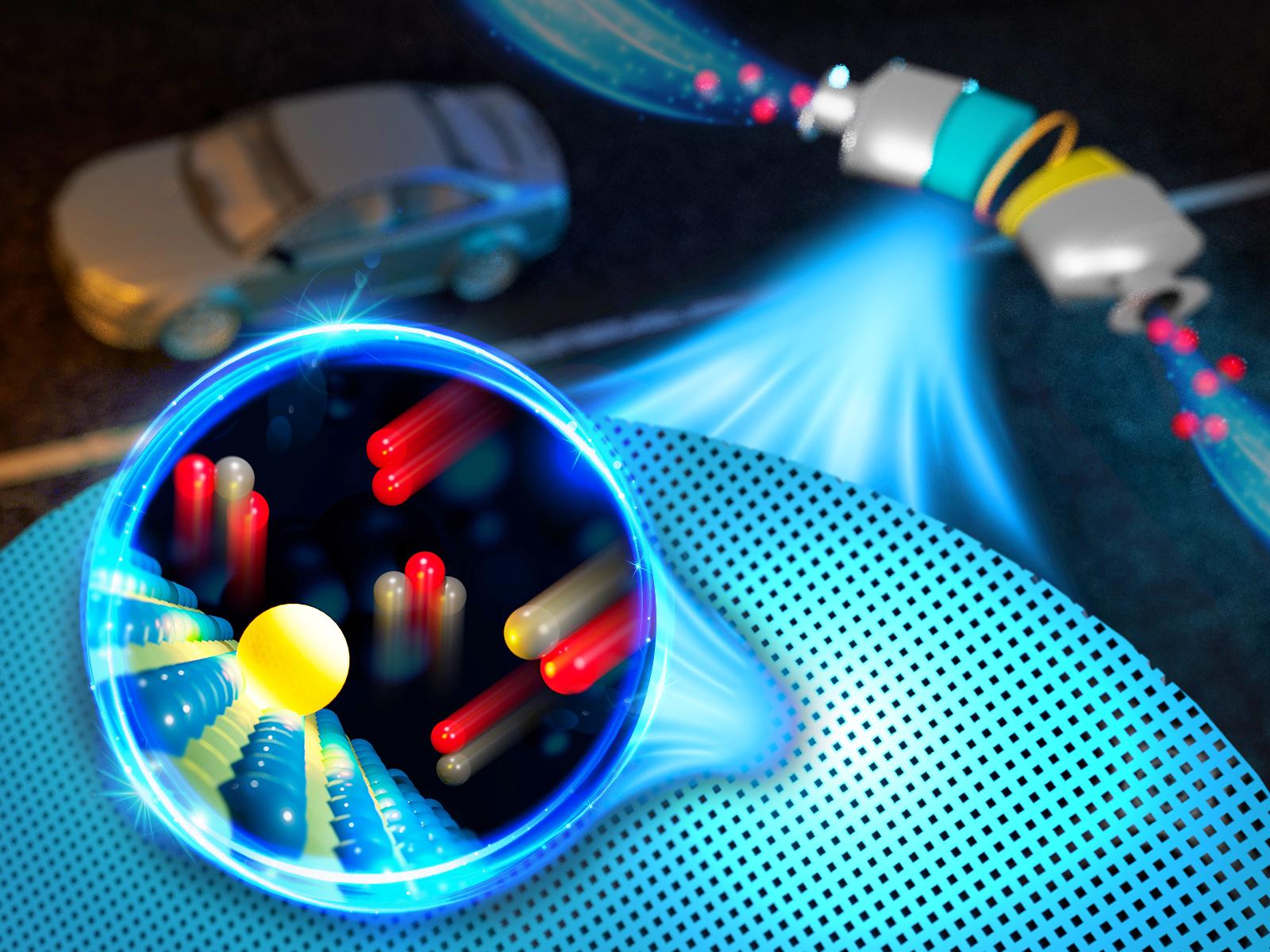Enhancing Single-Atom Catalyst Stability through Environmental Tailoring
Tuning the environment of supported palladium atoms with hydrogen treatment enhances their catalytic activity

Treating supported single-atom catalysts with hydrogen alters their bonding environment and overall activity toward carbon monoxide.
(Image by Derek Munson | Pacific Northwest National Laboratory)
The Science
Developing efficient carbon monoxide (CO) oxidation catalysts is crucial for both environmental protection and fundamental science studies. Researchers prepared palladium (Pd) single-atom catalysts (SACs) supported on titanium dioxide (TiO2). They found that treating the SACs with hydrogen (H2) produced SACs with high thermal stability and intrinsic catalytic activity for CO oxidation. The H2 treatment leads to a change in the Pd bonding environment and increased stability at high temperatures, with the Pd remaining as single atoms even at 300 °C. The H2-treated SACs have significantly higher catalytic activity than oxygen-treated or non-treated variants.
The Impact
Catalytic CO oxidation plays a critical role in controlling automobile exhaust emissions and is a prototypical reaction in heterogeneous catalysis. SACs are potentially exciting options given their high activity and maximum atom efficiency of platinum group metals, leading to lower use of these noble metals. This work highlights a new approach to increasing the thermal stability of SACs, which could be incorporated into future designs for other SACs targeting different reactions.
Summary
The development of efficient Pd SACs for CO oxidation has been hindered by their limited reactivity and thermal stability. Researchers created a thermally stable TiO2-supported Pd single-atom catalyst with enhanced intrinsic CO oxidation activity by tuning the local Pd atom coordination via H2 treatment. The Pd remained as single atoms after H2 treatment at 300 °C, in contrast to other studies that show the formation of Pd clusters at similar temperatures. Comprehensive characterization reveals that the H2-treated Pd single atoms have reduced nearest Pd–O coordination and form shortened Pd–Ti coordination, effectively stabilizing the Pd as isolated atoms at high temperatures. During CO oxidation, partial replacement of Pd–Ti coordination by O or CO occurs. This unique Pd local environment facilitates CO adsorption and promotes the activity of surrounding oxygen species, leading to superior catalytic performance. The turnover frequency of the hydrogen-treated Pd SAC at 120 °C surpasses the oxygen-treated Pd SACs and the most effective Pd/Pt SACs by an order of magnitude. These findings open new possibilities for designing high-performance SACs for industrial and environmental applications.
Contact
Yong Wang, Pacific Northwest National Laboratory and Washington State University, Yong.Wang@pnnl.gov
Zdenek Dohnalek, Pacific Northwest National Laboratory, Zdenek.Dohnalek@pnnl.gov
Funding
This work was primarily supported by the U.S. Department of Energy (DOE), Office of Science (SC), Basic Energy Sciences program, Division of Chemical Sciences, Geosciences, and Biosciences within the Catalysis Science program (DE-AC05-RL01830, FWP-47319). The authors also acknowledge the financial support of the DOE Office of Energy Efficiency and Renewable Energy, Vehicle Technologies Office. Pacific Northwest National Laboratory is a multiprogram national laboratory operated for DOE by Battelle. Use of the Stanford Synchrotron Radiation Light Source (beamline 9-3, user proposal 4645), SLAC National Accelerator Laboratory is supported by the DOE Basic Energy Sciences program under Contract No. DE-AC02-76SF00515. STEM imaging was performed at the William R. Wiley Environmental Molecular Sciences Laboratory sponsored by the DOE Biological and Environmental Research program located at Pacific Northwest National Laboratory.
Published: November 15, 2024
Lu Y et al. "Enhancing activity and stability of Pd-on-TiO2 single-atom catalyst for low-temperature CO oxidation through in situ local environment tailoring." JACS, 146, 41, 28141–28152 (2024). [DOI: 10.1021/jacs.4c07861]